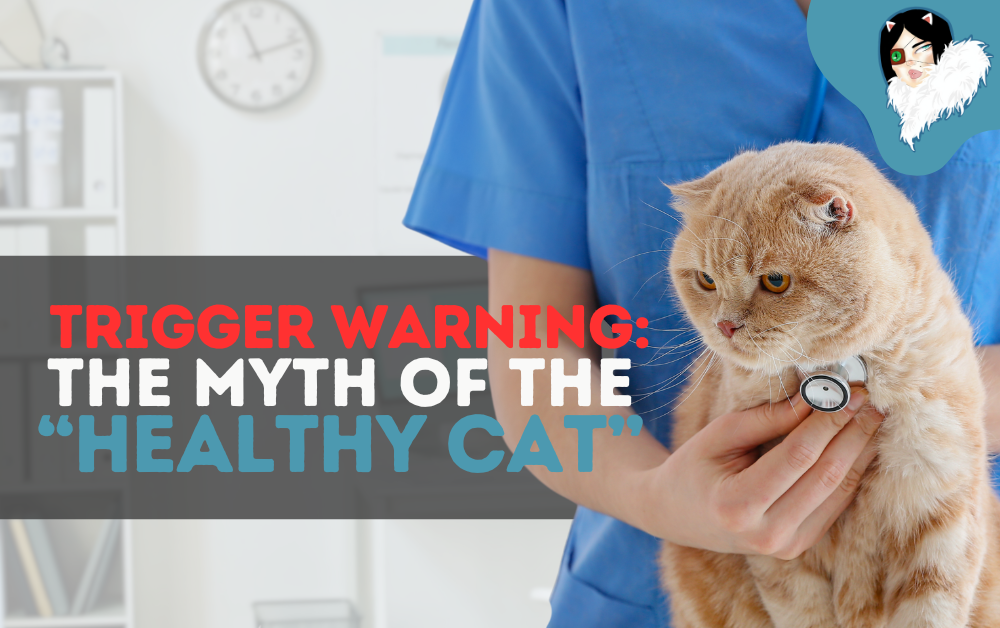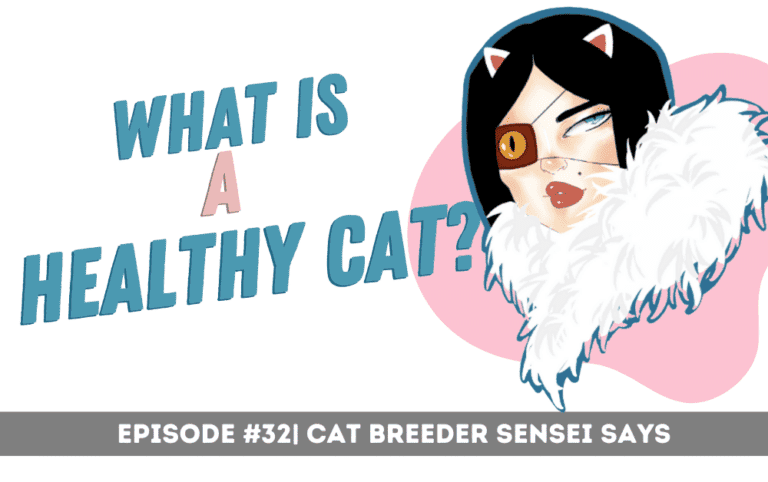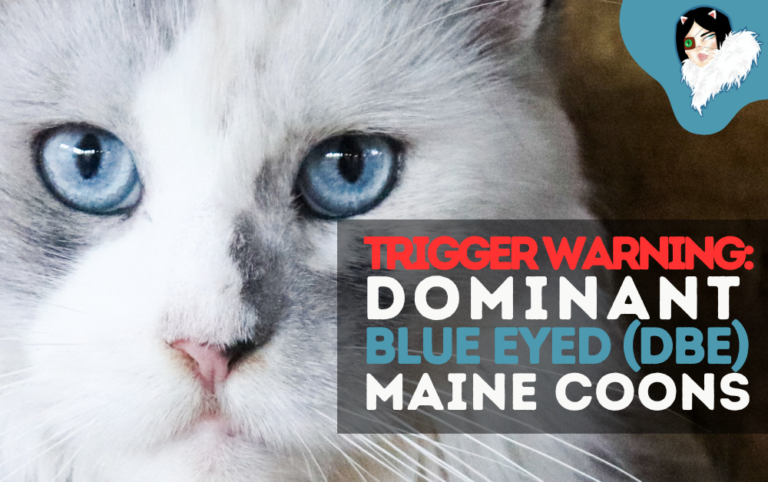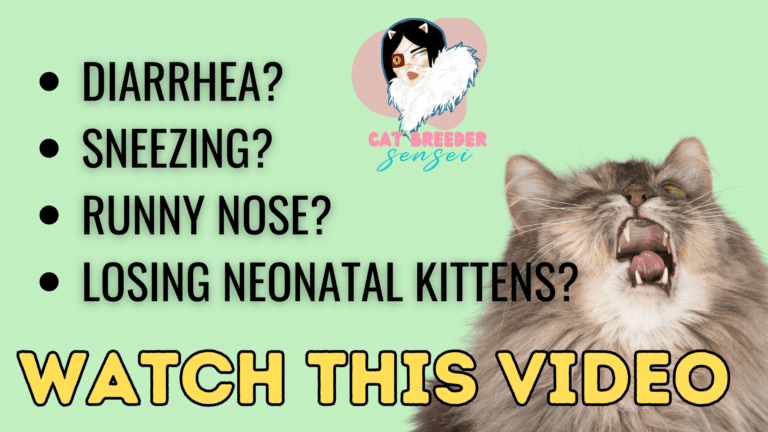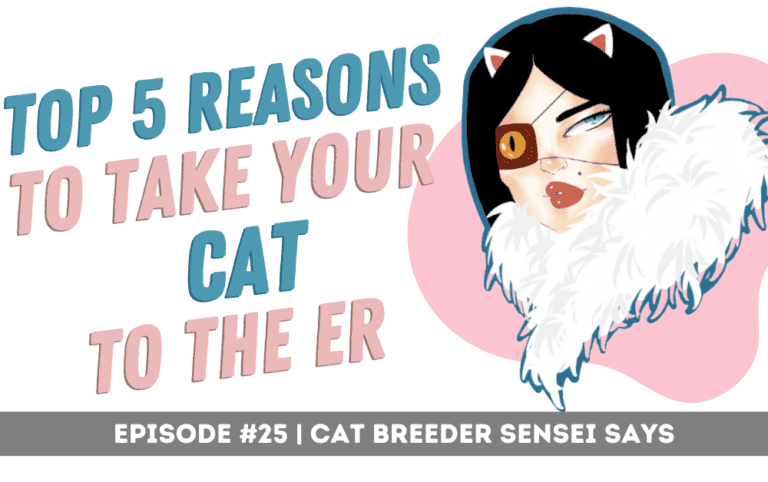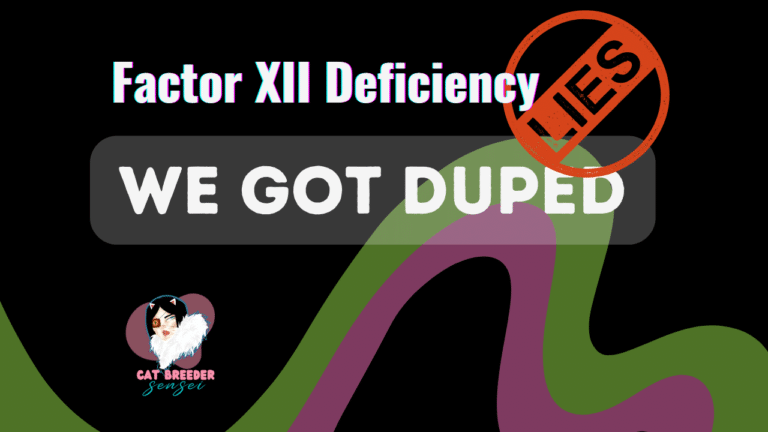TRIGGER WARNING: Our Take on The Myth of the Healthy Cat
In our latest episode, we’re diving headfirst into a topic that’s sure to ruffle some whiskers: What does it mean for a cat to be “healthy”? This question gets us fired up because it’s way more complicated than it sounds. We’re peeling back the curtain on the cat breeding world, and we want you to join us for the ride.
Listen to the Episode Below and Tell Us What You Think!
We’re dying to hear your take on this hot topic. Drop your thoughts in our No Judgement Zone Pedigree Cat Breeder Community or comment on our blog post. How do you define a healthy cat? Let’s get the convo started!
So, What’s a “Healthy” Cat Anyway?
We’ll be real with you: the term “healthy cat” gets tossed around like catnip, but pinning it down is like herding cats. Here’s how we see it:
- No Big Drama: For us, a healthy cat lives its full life—say, 12-15 years—without major health hiccups. Think routine vet visits for checkups and shots, not emergency surgeries or disease.
- Mischief Isn’t a Diagnosis: Cats are curious little gremlins. If they swallow a toy or get a tummy ache, that’s not a health failure—it’s just them being cats.
- Looks Can Fool You: Cats can strut around looking fabulous for years, only for something sneaky like a heart condition to pop up later. That’s why we’re cautious about slapping the “healthy” label on any cat.
Truth is, we can’t predict the future. No matter how many tests we run, claiming a cat is 100% healthy feels like tempting fate.
The Big Trigger: Hypertrophic Cardiomyopathy (HCM)
Alright, let’s talk about the elephant in the room—or rather, the heart condition in the cattery. Hypertrophic cardiomyopathy (HCM) is a big deal, especially for breeds like Maine Coons, Ragdolls, and Sphynx. It’s also one of the most divisive topics in our community. Here’s what we dug into:
- HCM by the Numbers: Our trusty AI sidekick (with an IQ double ours, no biggie) says 30-34% of Maine Coons carry an HCM-related genetic mutation, but only 10-25% show symptoms. That’s a wild range!
- The Echocardiogram Drama:
- Why We Screen: Some breeders swear by annual echocardiograms to keep tabs on their cats’ hearts. The idea is to catch HCM early and avoid passing it to kittens. Skip these, and the “cat hags” will come for you, calling you a backyard breeder.
- Why We Question It: Here’s the kicker—cats can pass every echo with flying colors, produce a ton of kittens, and still develop HCM later. We’ve seen it happen. One breeder we know lost her beloved stud to a sudden heart attack, despite yearly clear tests. It crushed her so much she quit breeding. That makes us wonder: are we really preventing HCM, or just chasing our tails?
- Our Stories: We’ve had our own wake-up calls. We had a stud who tested clear via echo for years, only to be diagnosed with heart disease at age seven. Out of his 45 kittens, one had HCM—or so we think, since no necropsy confirmed it. These experiences hit hard and make us question the “healthy” label.
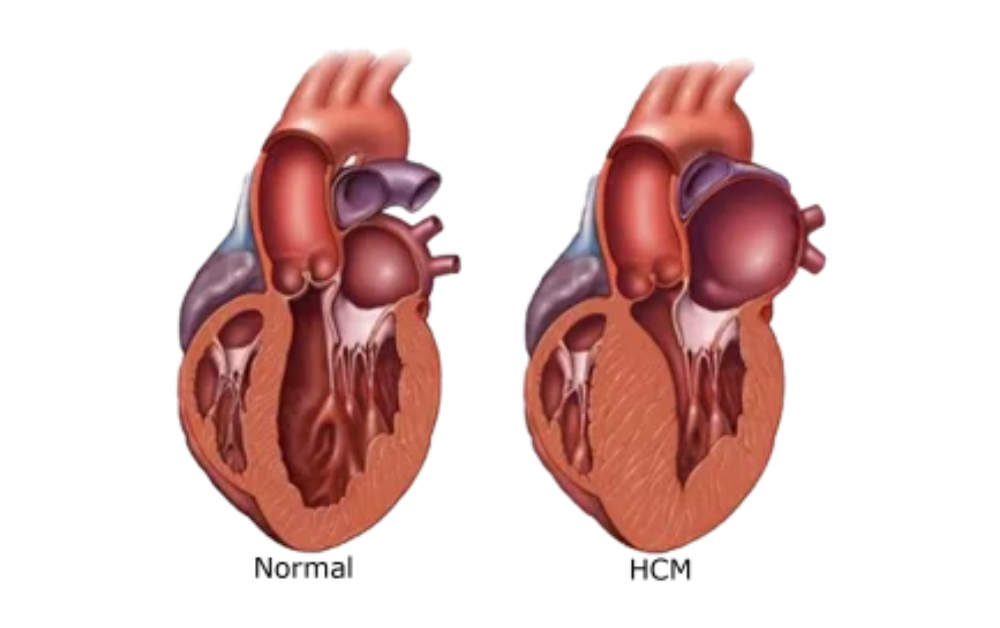
We’re not here to tell you to screen or not. It’s your cattery, your call. But we think it’s worth asking: do yearly echoes give us peace of mind, or just a false sense of control?
Beyond HCM: Other Health Curveballs
HCM isn’t the only thing keeping us up at night. We also talked about other health issues that mess with the “healthy cat” idea:
- Hip Dysplasia: Is it genetic, or just because Maine Coons are giant cats putting stress on their joints? Even with normal screenings in parents, some kittens end up with it. Can we ever breed it out, or is it something that just happens?
- Feline Infectious Peritonitis (FIP): This one’s a heartbreaker. Cats can get FIP out of nowhere, like humans getting cancer. No test can predict it, and it’s a reminder that some things are beyond our control.
- Weird One-Offs: Ever heard of megaesophagus? Entropion? Leg-perthes disease? We’ve seen kittens with these rare conditions—stuff you can’t screen for. One kitten needed surgery for a bone spur in her hip socket. Another had a throat issue requiring lifelong meds. These flukes keep us humble.
Why We Don’t Call Newborn Kittens “Healthy”
Here’s where we might step on some toes: calling newborn kittens “healthy” is a pet peeve of ours. Hear us out:
- You Can’t Know Yet: A kitten might look perfect at birth, but issues can pop up in hours, weeks, or years. We’ve seen “healthy” kittens pass away days after birth. Labeling them healthy is more about marketing than truth.
- Wait for the Long Game: We tell new breeders to hold off on health claims until their kittens hit 4-5 years old. That’s when you really know your lines. One health issue? Probably a fluke. Two from the same parent? Time to rethink that cat’s role in your program.
- Stress Reveals All: Moving to a new home is stressful for kittens, and that’s when problems like upper respiratory infections (URIs) or weak immune systems show up. A vet’s health certificate doesn’t mean much if the kitten’s sneezing the next day.
We’re not saying don’t be proud of your kittens—just don’t make promises you can’t keep.
Standing By Our Cats: Our Promise to Buyers
For us, being a responsible breeder isn’t about producing flawless cats (spoiler: they don’t exist). It’s about standing by our cats and our buyers when things go sideways. Here’s how we do it:
- Keeping It Real: We’re upfront with buyers—no cat is guaranteed to be issue-free, no matter how many tests we do. Honesty builds stronger relationships than empty promises.
- No Defensiveness: If a buyer calls us about a sick kitten, we don’t say, “It was fine when it left!” That’s a cop-out. Instead, we offer advice, check in daily, and sometimes cover vet bills. One buyer was shocked when we sent money for a URI treatment—she didn’t expect it, but it showed we care.
- Seven-Year Guarantees: We’ve upped our health guarantee to seven years. If something happens, we’ll replace the cat, no questions asked. No need for necropsies.
- Picky About Buyers: We use a detailed application to screen buyers, ensuring they have realistic expectations. Our Sensei Collective membership includes this template to help other breeders do the same.
Building a Community and Learning Together
We love connecting with you all, and this episode is no exception. Here’s how we’re keeping the conversation going:
- No Judgement Zone: Join our No Judgement Zone Pedigree Cat Breeder Community to chat about this episode and share your stories. We just posted an anonymous HCM survey there—how often do you screen, and have your cats been diagnosed?
- Sensei Collective: Want to level up your breeding game? Our Sensei Collective has courses on everything from breeding basics to TikTok marketing, plus tools like our buyer application template. You can even get one-on-one mentoring from us.
- Evolving Together: We geeked out over mink Ragdolls finally being recognized as a breed standard. It’s proof that our community’s research and persistence can move the needle. Let’s keep pushing for better health outcomes!
What’s Coming Up?
Our next episode is another trigger warning special: early spay and neuter. It’s gonna be a wild one, so subscribe on Spotify, Apple Podcasts, or wherever you listen to make sure you don’t miss it.
Let’s Hear From You!
This episode got us thinking hard about what “healthy” really means in our world. Now it’s your turn:
- Do you vibe with our take on HCM screenings, or do you see it differently?
- Have you dealt with surprise health issues in your cats?
- How do you handle buyer expectations while keeping it real?
Leave a comment on our blog to share your thoughts. Let’s support each other and make the cat breeding world a better place for our furry babies.
Keep making good choices, and we’ll catch you in the next episode!

